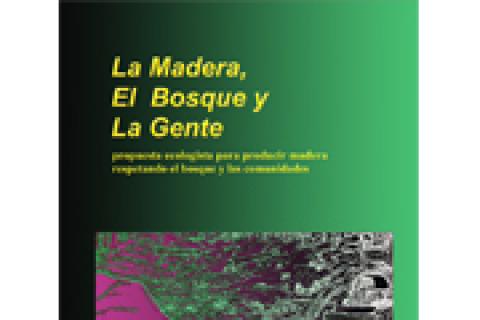As members of the global indigenous peoples' health caucus, Committee on Indigenous Health members prepared a number of technical briefing papers for the UN Permanent Forum on Indigenous Issues – most of us who were attending the second session were focussed on the activities of the so-called UN specialised programmes and bodies.
Other information
Just as the World Bank has named Uganda as one of the African countries to benefit from its three carbon finance funds (Prototype Carbon Fund, Bio Carbon Fund and the Community Development Carbon Fund), information about an unprecedented ‘land grab’, opening Uganda’s public forests to private development, begins to emerge.
Described by carbon market analysts as a ‘PR disaster’, the World Bank Prototype Carbon Fund’s Plantar project continues to add to the impression that ‘no carbon credits’ are good ‘carbon credits’. In a ‘Note on the Plantar PCF Project’ the World Bank recently acknowledged that allegations by the Brazilian plantations company Plantar S. A. regarding falsified signatures on the first in a series of Brazilian civil society letters outlining the problems with the companies carbon sinks project were incorrect.
Only available in Spanish - By Javier Baltodano
It is now well-documented how indigenous communities face serious discrimination from their societies, are exploited by others, and possess little protection for their resource rights upon which they rely to secure their livelihoods. Many of these groups also live in areas where local, national and international conservation organisations maintain strong interests.
Exxon's £1.3bn Chad-Cameroon pipeline stretches 1,000km across arid lands and equatorial forest to the African coast. When it reaches west Cameroon it runs adjacent to an old wildlife reserve where, for centuries, thousands of indigenous Bagyeli pygmies have depended on the forest for hunting and medicines.
Humankind’s closest relatives, the African Great Apes, may have vanished from the wild by the end of this century. The combined pressures of habitat loss and bushmeat hunting are driving them towards extinction. Unless these pressures are curbed, soon, there seems little hope that the dwindling populations of forest-dwelling mountain gorilla, lowland gorilla, chimpanzee and bonobo can sustain themselves for long.
The idea of a series of protected natural areas joined by surrounding buffer zones where low intensity activities take place is no doubt attractive. It could be a scheme that might even guarantee landscape or habitat continuity and avoid the fragmentation caused by industrial activities such as large-scale agriculture and tree plantations, urbanization or works such as roads and dams. This is what the text of the Meso-American Biological Corridor (MBC) project proclaims.
On analyzing the issue of protected areas, it is essential to hear the opinion of those who inhabit them, as the establishment of such areas usually results in impacts on the local populations. In this respect, we have extracted part of the Declaration of the Meso-American Indigenous Peoples to the First Meso-American Congress on Protected Areas (March 2003), which clearly expresses their points of view and their claims. The declaration makes the following considerations:
For most of the population of Honduras, the Rio Platano Biosphere Reserve is a motive for national pride. Added to the scenic beauty of this zone is its biological and cultural wealth with its conservation ensured for future generations. However, another part of the population – the most important one – is not of the same opinion.
The Greater Amazonia that stretches over approximately 7,8854,331 km2 (*) possesses the largest rainforest in the world, with flora and fauna that constitute, on their own, over half the world’s biota, comprising hundreds of thousands of plants and millions of animals, many still unknown to western science. At the same time, its waters represent between 15 and 20% of the planet’s total fresh water reserves, and the great River Amazon alone empties 15.5% of the non-salt water into the Atlantic Ocean.
High in the Peruvian Andes a unique initiative in indigenous-run conservation is being pursued to preserve the huge variety of domesticated potatoes that are one of the most significant elements of the region’s biodiversity. The ‘Parque de la Papa’ (Potato Park) is the brainchild of an indigenous-run organisation called the ‘Asociacion Andes’ (Quechua-Aymara Association for Sustainable Livelihoods – ANDES) and is being implemented by an association of six Quechua villages in the mountains south of Pisac in the Sacred Valley of the Incas.

